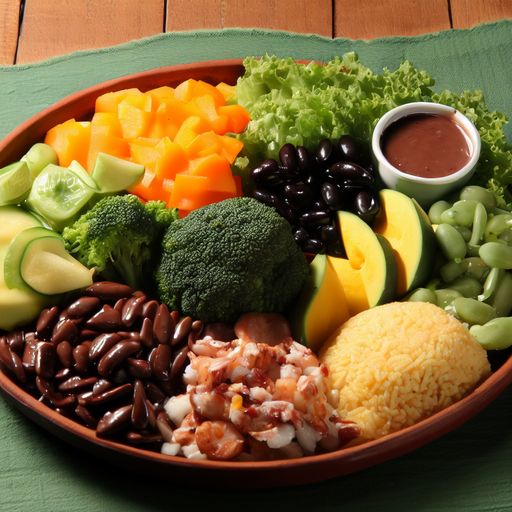Tips for Creating a Healthy and Balanced Plate
Creating a healthy and balanced plate is essential for maintaining proper nutrition and ensuring the intake of nutrients necessary for the body’s good functioning. Here are some tips for creating nutritious and tasty meals:
Vary Food Groups
A healthy plate should contain foods from different food groups, such as carbohydrates, proteins, healthy fats, vitamins, and minerals. Include whole grains, vegetables, fruits, lean proteins, and low-fat dairy in your meals.
Prioritize Fresh and Natural Foods
Avoid processed and industrialized foods, which are generally rich in chemical additives, sodium, and trans fats. Opt for fresh, natural, and organic foods whenever possible, as they are more nutritious and beneficial for health.
Increase Vegetable Intake
Vegetables are important sources of vitamins, minerals, and fibers. Include a variety of vegetables in your meals, such as leafy greens, vegetables, and legumes. They help promote satiety and provide essential nutrients to the body.
Choose Lean Proteins
Proteins are essential for building and repairing body tissues. Opt for lean protein sources like fish, chicken, eggs, tofu, and legumes. Avoid processed meats and those high in saturated fats.
Control Portion Sizes
Balanced eating also involves portion control. Avoid excesses and learn to recognize the appropriate amounts for each food. Use smaller plates and chew your food well to help with satiety.
Include Healthy Fats
Don’t be afraid of fats! They are important for the body’s functioning. Opt for healthy fats, like those found in avocado, olive oil, nuts, and seeds. Avoid trans and saturated fats, present in fried and industrialized foods.
Stay Properly Hydrated
Water is essential for the body’s good functioning. Drink at least 2 liters of water per day and avoid excessive consumption of sugary drinks. Also, include fruits and vegetables high in water content, like watermelon and cucumber, in your meals.
Avoid Excessive Sugar and Salt Intake
Excessive consumption of sugar and salt can lead to health problems like diabetes and hypertension. Reduce the amount of added sugar in your meals and avoid processed foods rich in sodium. Use natural seasonings to flavor dishes.
Make Colorful Meals
A colorful meal is synonymous with a variety of nutrients. Include foods of different colors on your plate, like fruits, vegetables, and greens. The more colorful your plate, the greater the diversity of vitamins and minerals consumed.
Plan Your Meals
To ensure a healthy and balanced diet, it’s important to plan your meals in advance. Make a shopping list with nutritious foods and avoid buying unhealthy items. Cook at home whenever possible, as this gives you full control over the ingredients used.
Follow these tips and create healthy and balanced plates, providing your body with all the necessary nutrients for a healthy life. Remember that proper nutrition is essential for physical and mental well-being.

